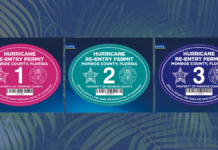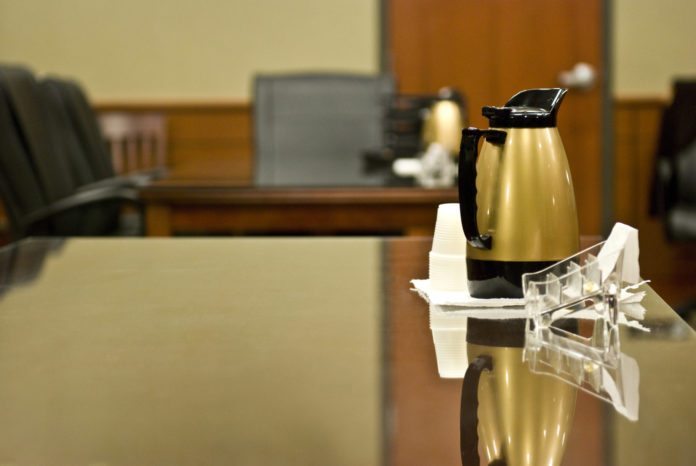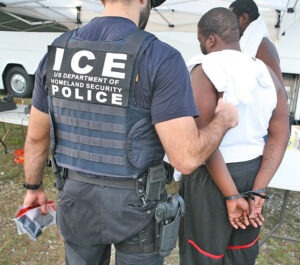* All the names of the Drug Court clients have been changed to protect their anonymity.
“I was very angry. I was angry at the whole world because of my own mistakes,” said Sophia*. “I didn’t think I deserved to be here because I am a good mom.”
Sophia and her husband are both Monroe County Drug Court clients. Theirs is a complicated case with criminal, drug dependency and parenting issues all wrapped up in one tangled mess. Week by week, month by month, they are sorting it out with the help of court personnel and other agencies.
“This is going to sound strange, but getting busted was the best thing that ever happened to me. It let me take control of my life for real. I’m setting goals,” said John*, Sophia’s husband.
John and Sophia are model drug court clients. They say they “get” the program and that it’s working for them. They also serve to highlight the complexities of the enterprise. Drug Court hears three types of cases — juvenile, adult and family intervention. (The family intervention cases are dependency cases filed by the Department of Children and Families.) It has to, because often as not, a peek in to a person’s circumstances will reveal that all three are intertwined — a mother addicted to pills, a teenage son on a bad path, a “party” that gets busted and under-aged children present removed from their homes, etc.
According to Drug Court Manager Joann Brancel, Monroe County’s version of Drug Court has been in existence since the 1990s. For a program that’s been around 20 years, it’s still a dynamic and changing institution. There’s a complicated set of rules to determine who qualifies for Drug Court and is accepted. For adults and juveniles in the diversionary court who successfully complete the program, charges are dropped. In family treatment court, parents are reunited with their children.
Clients of Drug Court, or their family members, may also be receiving services of Guardian Ad Litem, Wesley House, Department of Juvenile Justice, State Attorney’s Office and the Public Defenders Office. The team communicates constantly so, for example, the Wesley House caseworker in charge of a minor’s case will know whether or not the kid’s father is testing clean. Ditto Mom’s job interview. Ditto court-supervised visitations. Ditto fines.
Sarah Brawer, a drug counselor in the Middle Keys, sums it up best. Although she was speaking about the implications of a family member of a friend suffering from addiction, it applies to the teamwork above, too.
“Drug abuse is not an ‘us’ or ‘them’ situation. Substance abuse touches everybody,” she said.
Nor is it an ‘us’ or ‘them’ situation in terms of locals versus transplants or regions of the Keys. They appear in Drug Court in equal numbers. For example, right now the Middle Keys Drug Court has 20 open cases with the majority of them family intervention cases. The Upper Keys has about 20 and the Lower Keys and Key West have between 60 and 70.
The Drug Court counselors oversee the day-to-day operations of clients navigating between Phase 1, Phase 2 and Phase 3. As clients progress, the court-ordered therapy is less frequent as are the required Alcoholics Anonymous meeting and “drops” — peeing in a cup to test for narcotics. The counselors keep the judges up to date on successes and failures.
“Some of them are so excited about this. They are constantly coming into my office and asking me to e-mail Judge Jones about their new apartment, or the class they just signed up for. They want him to know,” Brawer said.
For Brawer, volunteering and education are a huge part of rehabilitation. She said she gets very creative about helping students find ways to pay for classes with service club scholarships. She also encourages clients to give back by volunteering at the local food pantry or serving as church camp counselors.
Andrew Bradley, also a drug counselor in the Lower Keys, makes community engagement and exercise a priority. In the past, Drug Court clients have cleaned windows, built benches and painted for various businesses and not-for-profit groups around town. Bradley has also encouraged his clients to exercise.
“We want to give them the tools to succeed and that means finding healthy ways to occupy their time. It’s all about reducing risk factors and adding protective factors.
What happens in the courtroom?
There’s clapping. Drug Court days happen once a month in each region, the duties divided between circuit and county judges. The cases are stacked up one after another, with some clients choosing to stay and support friends who are also enrolled in the program. As clients move from one phase to the next, supporters cheer and clap.
“There’s definitely a sense of community,” Brawer said of her Drug Court clients. They carpool to meetings or get together for a picnic with their kids, including those parents and children who require court-ordered supervision. On Drug Court day it’s sort of like a group gut check — one by one they approach the podium to have a conversation with the judge and the drug counselor, with the folks in similar situations listening intently.
“You seem like a changed man. You hold yourself so differently. The whole picture is very encouraging,” Judge Jones told one adult client.
“How’s the baby?” he asks another.
Successes are celebrated and set backs are met with calm acceptance.
A week before his meeting with the judge, one young man was talking about his dislike for the program. “All [they] do is drug test you and yell at you. They tell you to sneeze to the left and sneeze to the right,” said Johnny, 17. A week later, leaving in the custody of a staffer from the Department of Juvenile Justice, his slumped shoulders and puffy eyes screamed regret at dropping out of the program.
And set backs are acknowledged. One young man on the verge of “graduating” from Drug Court tested positive for narcotics use. He was dignified and honest about his transgression. The client, the judge and the counselor all agreed he wasn’t quite ready and tailored the sanction to match the circumstances.
“I am going to recommend four months in Phase 1,” Brawer said. “And then we’ll see what happens.”
Outcomes
Drug Court counselors will say the program is not about fixing people. It’s about people working hard to turn their lives around. It’s sad when it doesn’t work, but the fact that there are almost 2,000 Drug Courts in the U.S. can only mean this is the best way to break the cycle of addiction, incarceration and family dissolution; best way, not perfect.
“Addiction is such an insidious problem. Citizens get in the system and they need to have a motivation to change and do the hard work,” said Judge Mark Jones of the 16th Judicial Circuit Court. “There’s plenty of treatment and recovery that happens outside these walls, but the courts have the authority to enforce some of the steps, as well as give the probationers praise and relief.”
Attorney Donald Barrett will face Jones in the upcoming election for circuit court. He said he thinks Monroe County’s Drug Court is a successful program.
“It’s needed. I have had my own clients who have gone through the program successfully and it has been of benefit to them,” Barrett said. “If I’m elected, I would be interested in expanding diversionary types of court – mental health court or veterans court.”
Cassandra’s* case was initiated by the Department of Children and Family more than a year ago. She’s been attending Drug Court for eight months.
“I had stopped doing drugs, but I was still drinking. I wasn’t getting caught, but I was just a mess. I needed more help and counseling so I signed up for Drug Court,” said the 24-year-old woman. “A lot of things have changed. I got my daughter back. I got my own place to live. I pay the bills. I’m learning how to be a single mom. I’m signing up for college classes.”
As of 2013, there were more than 2,800 drug courts operating in the U.S., most targeting adult offenders. The cost is $2,500 to $4,000 per client going through the system, but offenders often pay most of the fine — as opposed to the $21,310 of the annual cost of a prison bed borne by taxpayers.
There are many studies that judge the effectiveness of the diversionary court. One, published in 2012 by a professor at the University of South Florida found that adult participation in a drug court results in a drop of recidivism between 50 and 38 percent.
Local stats for 2013-1014
86 percent: Successful completion of adult diversion drug court.
52 percent: Successful completion of juvenile diversion drug court.
75 percent: Successful completion of family intervention court.
























